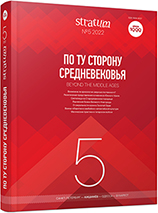Этноним русь и восточногерманское *rauþs ‘красный’: еще раз к обоснованию гипотезы
The Ethnonym русь and the East-Germanic *rauþs ‘Red’: new contributions to the hypothesis
Author(s): Aleksey A. RomanchukSubject(s): History, Ethnohistory, Historical Linguistics, 6th to 12th Centuries
Published by: Издательский дом Stratum, Университет «Высшая антропологическая школа»
Keywords: Rus’/русь; Slavic; etymology; East-Germanic; *rauþs ‘red’; Baltic Finns;
Summary/Abstract: The author draws attention to a number of important unresolved problems (including those recognized by leading supporters) of the currently dominant variant of the Scandinavian etymology behind of the ethnonym Rus’/русь, He argues a new version of the East Germanic etymology of this ethnonym. Following the explanatory model of “Finno-Germanic militarized groups”, the author believes that for the Roman period we should also assume the existence of such groups (in particular, on Saaremaa, Lanemaa and Virumaa), controlling the sea route along the southern coast of the Baltic — but with the East Germans as the dominant element. East Germanic *rauþs ‘red’ is proposed as the original etymon for русь. Taking into account the phonetic processes characteristic of the East Germanic languages (early contraction of the original Germanic diphthongs and the tendency to increase vowels), a natural stage of evolution of *rauþs ‘red’ should be the form *rōþs. Considering ethnonymic models of the Finnish peoples (and Goths), we should justifiably obtain the form *rōþ (but with the meaning ‘red’) as the original etymon for the Slavic русь.
Journal: Stratum plus. Археология и культурная антропология
- Issue Year: 2022
- Issue No: 5
- Page Range: 335-343
- Page Count: 9
- Language: Russian

